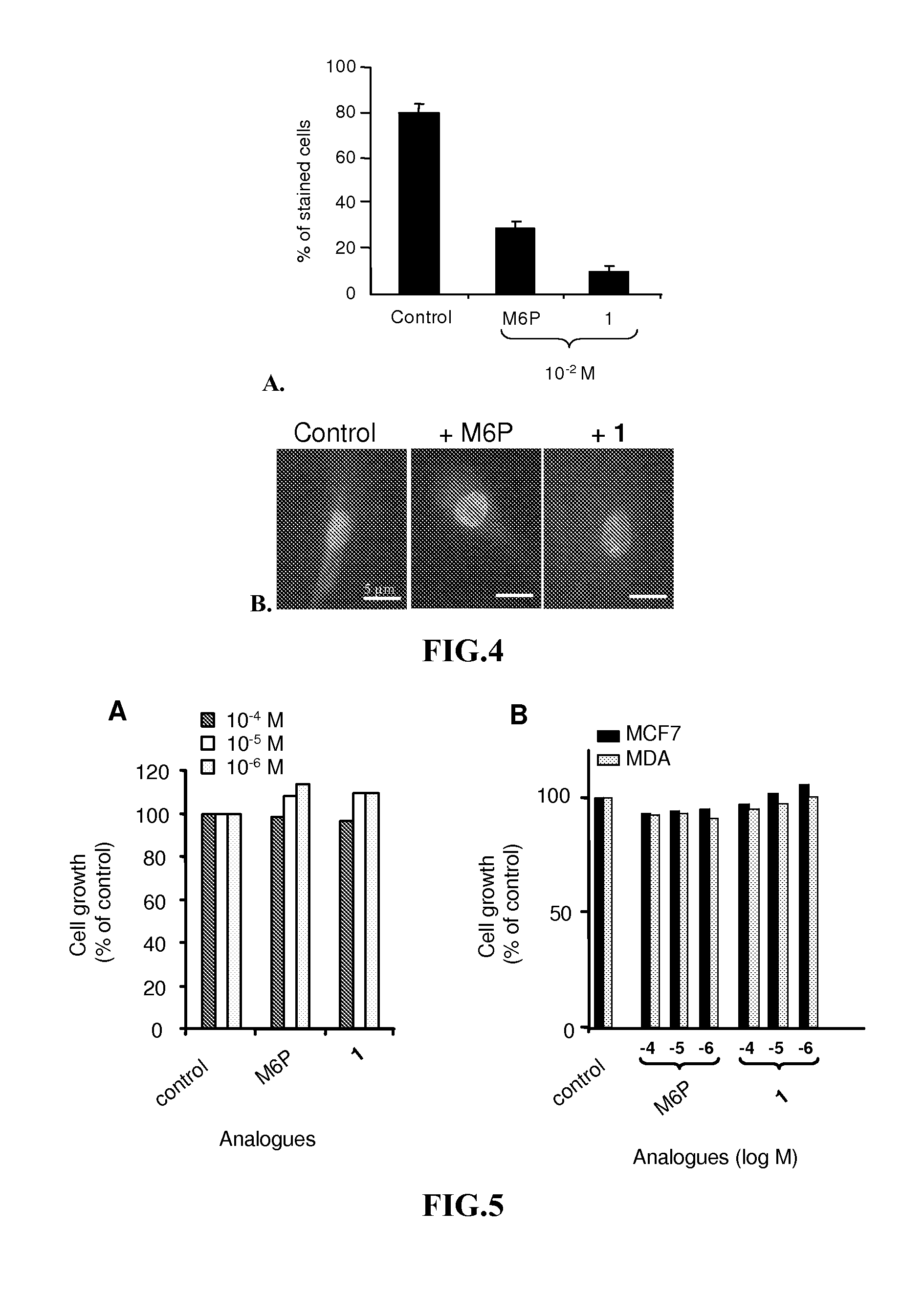Compounds targeting the cation-independent mannose 6-phosphate receptor
a cation-dependent, 6-phosphate technology, applied in the direction of peptide/protein ingredients, metabolism disorders, extracellular fluid disorders, etc., can solve the problems of insufficient lysosomal enzyme purification from recombinant expression systems, difficult large-scale production of sufficient quantities of enzymes for therapeutic administration, and limited supply of enzymes required for the required amount of enzymes, etc., to achieve high affinity
- Summary
- Abstract
- Description
- Claims
- Application Information
AI Technical Summary
Benefits of technology
Problems solved by technology
Method used
Image
Examples
examples
1.1. Synthesis and Characterization of High Potent M6P Analogues
[0141]The synthesis and characterization of high potent M6P analogues (M6 Pa) were realized by replacing phosphate group by phosphonate, malonate or carboxylate group [Vidal S et al., Bioorg Med. Chem. 10, 4051, 2002; Jeanjean A et al., Bioorg Med. Chem. 14, 2575, 2006; Jeanjean A et al., Bioorg Med Chem. Lett. 18, 6240, 2008].
1.2. Binding Assay to CI-M6PR of M6P Analogues
[0142]The binding assays of the M6 Pa were performed using biotinylated CI-M6PR. Briefly, the CI-M6PR, purified on a phosphomannan-sepharose affinity column was biotinylated by N-hydroxysuccinimide biotin. The binding of the biotinylated CI-M6PR(CI-M6PRb) to pentamannose 6-phosphate (PMP) previously adsorbed on a microtitre plate was displaced by increasing concentrations of M6 Pa. The bound CI-M6PRb was then determined using the streptavidin / peroxidase couple and OPD substrate by optical density measurements. In control experiments the method was stan...
PUM
| Property | Measurement | Unit |
|---|---|---|
| temperature | aaaaa | aaaaa |
| pH | aaaaa | aaaaa |
| body weight | aaaaa | aaaaa |
Abstract
Description
Claims
Application Information
 Login to View More
Login to View More - R&D
- Intellectual Property
- Life Sciences
- Materials
- Tech Scout
- Unparalleled Data Quality
- Higher Quality Content
- 60% Fewer Hallucinations
Browse by: Latest US Patents, China's latest patents, Technical Efficacy Thesaurus, Application Domain, Technology Topic, Popular Technical Reports.
© 2025 PatSnap. All rights reserved.Legal|Privacy policy|Modern Slavery Act Transparency Statement|Sitemap|About US| Contact US: help@patsnap.com



